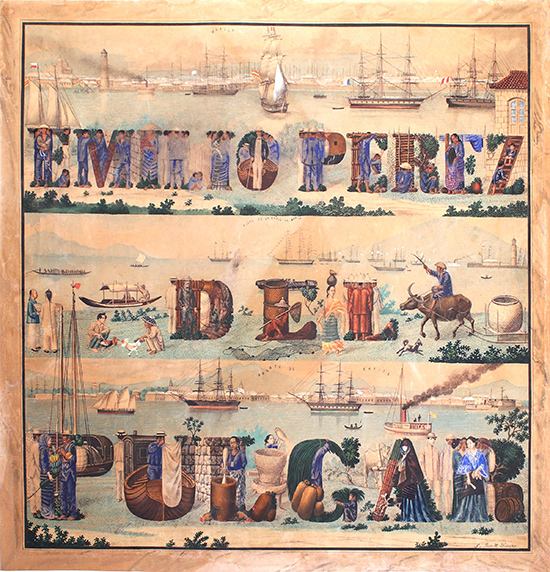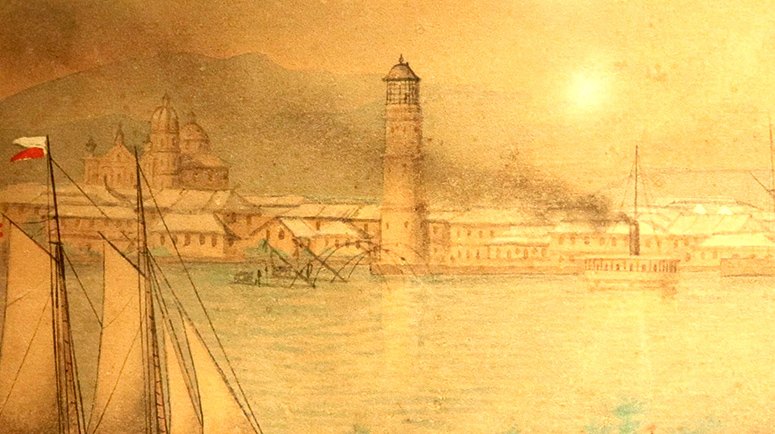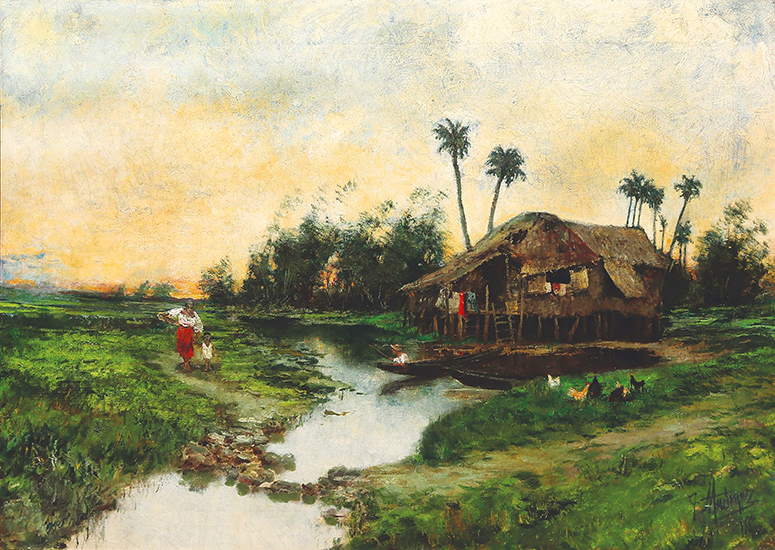Lozano’s ‘Letras y Figuras’ to Murakami
Call me by your name
In 1849 — and rather belatedly in the twilight of the Spanish empire — one governor-general had simply had enough.
That man was Narciso Claveria, who also styled himself with a flourish as the “Conde de Manila.” He ordained that the indio inhabitants of these fair isles would henceforth have to adopt new last names out of a catalogue the colonial powers had fashioned.
No more nonsense such as missing last names, no more tongue-twisting syllables, no more unpronounceables. Truth be told, there were some Tagalog words thrown into the lot, some of them tinged with a dark, deprecating humor.
But in the same way that the modern Pinoy turns up his nose to Sinovac and makes a stampede for Pfizer, Spanish surnames became all the rage.
One can imagine what a roaring trade Jose Honorato Lozano — the master of the artform “letras y figuras” — and his atelier made out of the shiny, new “apellidos” and the need to memorialize them.
The charm of “letters-and-figures” consists of spelling out words by painting clever paintings of men, women, children, and even farm animals to outline their shapes.

The thing was, Lozano himself was one of those very Filipinos who was known maddeningly just by a first name and his family’s occupation. It was this very medieval state of affairs that the Spanish, who were the original inventors of the paper chase of requisitos, wanted to correct.
Troublemakers and rebels were impossible to keep track of until the catalogo which not only established a national identification system, it also pegged subversive natives to a single location.
Thus, for example, the “P”s would be assigned to Pasay City and woe unto you if you traveled without permission from the local guardia civil out of your jurisdiction. (Think certifications from the PNP and quarantine passes.)
Now, Lozano himself was known in his neighborhood as “Pepe Bahia” (Pepe of the Bay) and occasionally even "Pepe Vigia’" (Pepe of the Perilous Rocks), appropriate to the son of the lighthouse keeper of Manila. You can imagine how difficult it might have been for prospective customers to track him down before he had picked the name that now appears at the bottom of this piece.
Moreover, Lozano had slyly inserted his “Pepe Vigia” identity into this work not just once but twice, with views of his father’s light-tower from both sides of Manila Bay. Through his eyes, schooled by a lifetime peering out of this beacon’s windows, we also see all manner of seafaring vessels from tiny skiffs and bancas to steamships and frigates.
Lozano is practiced in all the flags of the nations as well as their signal pennants. Recently discovered in Spain, it is a centerpiece of the León Gallery Spectacular Mid-Year Auction this June 5.

But what about the owner of the name “Emilio Perez del Pulgar”? We spy what is most likely him in the center of this work, a well-dressed Chinese mestizo wearing a bowler hat just like Jose Rizal and wreathed by the letter “O” in “Emilio.”
He is surrounded by a coterie of mischievous-looking chums and, judging from the different stuff featured in this painting, he was involved in the trade of everything from bananas to sugar cane, rice to fishing nets.
The shadow of another lighthouse also appears in the forthcoming auction with an utterly charming landscape of Napindan, a part of old Taguig.
Both “Perez” and “Pulgal” (Pulgar) appear in Claveria’s infernal catalog; Pulgar, in particular, is Spanish for “thumb” or is sometimes used as a unit of measurement (the pulgada), perfectly suited to a seafaring entrepreneur.
The shadow of another lighthouse also appears in the forthcoming auction with an utterly charming landscape of Napindan, a part of old Taguig. Imagine that place now on the way to BGC and this painting hanging on the wall of one of the extravagantly priced condos in that posh locale.
This particular work is by the stalwart Felix Martinez, who now rules over the road that connects San Juan, Mandaluyong and Makati and who is familiar to commuters merely as “F. Martinez.” Martinez was an H.R. Ocampo character, part journalist, part newspaper illustrator and, in his time, also quite a famous painter.
In this breezy picture he captures the splendid isolation of this ancient district, which marks where the Pasig River joins Laguna Bay.
Local legend has it that the Napindan lighthouse — which apparently still stands, unlike Lozano’s Manila landmark — was a favorite hideout of Andres Bonifacio who would run clandestine meetings in this neck of the woods because it was out of the way but was still a quick boat ride from Bonifacio’s lair in Tondo.

Another accessory with a name on it also looms large: a silver “palitera” (a.k.a. a palito or toothpick holder) that has been described as the “holy grail” of hacienda tablescapes.
Apart from the Limoges plates and crystal goblets, this piece was considered essential in turn-of-the-century banquet tables of importance. It is shaped like a pineapple, which is the Oriental symbol of hospitality and good fortune.
One of its owners in the centuries of its existence has incised his initials on it, a “DGH” that could account for any current zillionaire’s — or his company’s —monogram.

As for the dear old present, one more painting has the artist’s name writ unmistakably large, “Hollow Multi” by Takashi Murakami. Murakami is doubly famous for a name he’s built as an art brand and also for the concept of Japanese pop expression known as “super flat.”
It supposedly refers not only to the paper-thin application of paint to canvas to make it “non-three-dimensional” but also to the shallowness of modern life.

Indeed, for titans from Lozano or Murakami, it’s understood that art is the ultimate seduction, a way of asking us to call them by their names and join them in their worlds.


